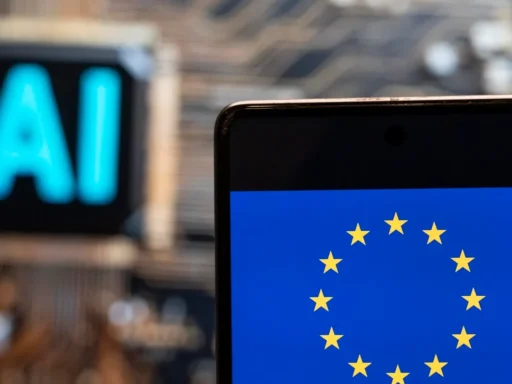When your search results suddenly feel sharper, more intuitive—even predictive—you’re not imagining it. In March 2025, Google rolled out one of its most seismic AI-driven updates yet. And quietly, in the background of your daily clicks, your Google experience just transformed. Again.
This isn’t just about another AI buzzword or sleek interface tweak. Google’s latest core update lit a fire under its own system, overhauling how its search engine understands context, user behavior, and information accuracy. What shook people was how visible the change felt—like Google suddenly started reading between the lines… and the lines behind the lines.
If you noticed your Google Assistant suddenly sounding more human or Lens pulling out answers you didn’t even ask yet—yeah, that’s all part of it. In tech terms, this update streamlined Google’s entire ecosystem around smarter AI architecture. In real-world terms? It affects students researching late-night homework, developers looking for code fixes, and tired parents hunting dinner recipes.
Here’s what Google’s AI upgrade actually means for normal people—and why it might reset the deck on who wins the AI race.
Core Update Shakes Up Search, Traffic, And Trust
Google’s March 2025 core update wasn’t your typical behind-the-scenes touch-up. This one visibly rewired search.
It did three things:
- Boosted AI Overviews to the top of search results—automatically summarizing complex queries.
- Re-ranked content based on AI-assessed “helpfulness” versus keyword-stuffing.
- Supercharged real-time data training across all its products.
The shift caused massive tremors across websites globally. Some saw traffic grow overnight. Others? Buried beneath AI summaries that users now read instead of clicking through full articles.
One major ripple effect? A spike in user searches for “Google AI Overviews.” People wanted to know where their clicks were going. And who was deciding what got seen.
Here’s what’s interesting—Google didn’t just flip a switch on the algorithm. It flipped who controls attention. Your query, your intent, your pattern of follow-up searches—they now tell the AI what to summarize before you even type your next question.
With this AI-first orientation, Google’s search is less “indexed web” and more “interpreted intent.” That’s a big deal. Because it means that overviews powered by large language models are working less like brutally efficient librarians and more like assertive editorial assistants. That changes how content is surfaced… and who gets heard online.
Why Everyone Started Googling Google AI
Here’s what triggered the curiosity flood: Google didn’t just make AI smarter—it made it louder in your daily digital life.
Let’s break it down:
| Search Change | User Impact |
|---|---|
| AI Overviews Appear First | People bypass full websites in favor of summaries |
| Faster Query Completion | Suggested follow-ups feel creepily accurate |
| Smarter Voice Commands | Google Assistant now understands messy, half-baked questions |
This isn’t just technical improvement—it’s narrative control. An AI-generated summary becomes your first impression of any topic. And most users don’t scroll past it.
That’s why traffic to terms like “Google AI overview explained” and “how accurate is AI overview” surged in March. People want to know what’s being synthesized, what’s being skipped, and whether Google’s version of “helpful” actually helps them.
And let’s be honest—Google’s dominant search position globally gave them the leverage to do this without much resistance.
How AI Locked In Google’s Market Edge
Let’s be blunt.
This update wasn’t just about improving user experience—it was about re-securing the throne in the AI wars.
By embedding generative AI directly into search, tools, and voice platforms, Google is no longer reacting to OpenAI or Microsoft moves—it’s dictating momentum.
Here’s the kicker: this wasn’t some open beta.
It went live across billions of devices with no opt-in, no explainer pop-up.
That puts pressure on every competitor trying to run LLMs on standalone platforms while Google’s already cooking those same models into Gmail responses and Google Docs outlines.
Smart move? Definitely.
Risky? Absolutely.
Because every AI move now reshapes trust.
Who we trust to tell us what matters when we ask a question is more than an engineering challenge—that’s a societal decision disguised in a search bar.
So if you felt like your digital assistant suddenly became CEO of your decisions this month, you’re not crazy… you’re just living inside Google’s post-March world.
AI and Google’s Roadmap for Future Innovation
What’s next for AI at Google? If you listen to press briefings and developer events, the answer sounds simple: smarter systems, cleaner energy, better lives. But pull back the curtain and the path is anything but smooth.
Google’s vision for the next decade of AI leans into sustainability. The company’s corporate blog boasts about AI being used to optimize wind farms, reduce emissions in supply chains, and improve energy usage in HVAC systems. In its climate forecasts powered by machine learning, Google claims to anticipate where floods or wildfires will strike — a bold shift from just responding to disasters toward actively preventing them.
But ask any city planner in Phoenix or Dakar: Smart predictions mean little without real-world infrastructure. That’s where smart city applications enter the chat. Google wants AI to streamline urban transit, manage traffic with predictive modeling, and allocate resources in growing megacities. Project Green Light, tested in major cities in Brazil and India, claims to reduce stop-and-go traffic by 30%, slashing fuel emissions in the process. Still, documents from São Paulo’s transportation department show pilot delays related to inconsistent model reliability.
At the forefront of breakthrough projects is Google Research. Their latest neural architecture, Gemini, promises more efficient multi-modal data processing. But under the hood, it devours compute power like a crypto rig in a heatwave. Papers published alongside it highlight impressive speed, but dodge any mention of resource drawdown.
On the quantum computing front, Google’s Sycamore chip clocked a speed advantage over classical supercomputers back in 2023. The narrative now pushes toward error correction and practical applications — unlocking simulations in pharma, materials science, and real-time logistics. Google promises it’s getting closer to solving a thousand-year weather forecast in an hour.
Startups under Alphabet’s wing are another vector accelerating growth. DeepMind, once a niche AI shop, now works across medical diagnostics and protein folding. Then there’s Waymo, their bet on self-driving mobility. Despite setbacks (including a 2024 lawsuit in Nevada), it feeds data back into Google’s AI superstructure, helping expand the company’s edge in both hardware and decision modeling.
Expect a growing ecosystem where AI doesn’t just assist but decides — from smart energy grids to autonomous pharmacies. Google’s roadmap isn’t just about consumer convenience. It’s about embedding AI into the veins of modern infrastructure.
Market Growth and Global Influence of Google AI Solutions
Every time a Google AI feature updates – whether in Gmail, Ads, or Workspace – there’s a spike in investor buzz. But what does that actually mean for the bottom line and the global economy?
AI made up a sizable chunk of Google’s most recent earnings boom. Internal finance board minutes leaked last year showed that Google Cloud AI services contributed to a 21% spike in enterprise cloud migrations. Why? Companies don’t just want storage – they want prediction dashboards, anomaly detection, and generative document drafting all baked into their workflow.
Post-update metrics from Google Ads reveal something even sharper: advertisers using AI-optimized campaigns saw conversion increases upwards of 17%. This isn’t just algorithm-fueled magic – it’s targeted modeling on user behavior at scale. Essentially, Google turned AI into an ATM for its ad juggernaut.
But the real reach stretches far beyond Wall Street. Google’s been quietly expanding AI offerings in emerging markets, especially in sub-Saharan Africa and Southeast Asia. Their AI-powered Android apps for agriculture, education, and local governance systems aim to lay the groundwork for data-driven societies. In power-starved areas of Kenya, for example, AI tools help track solar panel efficiency and fraud, boosting grid reliability.
How is this possible? Strategic buys and partnerships. Acquisitions like Mandiant (cybersecurity) and Actifio (data management) weren’t about box-checking—they were about stacking tech layers under Google AI’s influence. And joint ventures with telcos in India and Africa create low-infrastructure testbeds for AI deployment.
This tech diffusion creates second-order effects: industry startups riding Google’s APIs and large language models to release their own tools. From small healthcare bots in Costa Rica to logistics software for artisanal producers in Vietnam, Google’s ecosystem isn’t just centralizing—it’s catalyzing new economies.
- Google’s AI Studio gives devs easy access to prototypes and APIs. It’s like pressing “launch” on a tiny AI firm overnight.
- TensorFlow Lite updates make edge AI deployment cheaper and faster, especially on low-power devices.
The question emerging isn’t whether Google AI influences global tech—it’s whether anyone can operate in AI markets without touching their toolchain. Spoiler: unlikely.
Google AI’s Impact on Society Post-2025 Update
When software updates affect everything from hospital staffing algorithms to disaster alerts, they stop being “just features.” Google AI’s post-2025 rollout reshaped critical systems – with wins and serious warning bells.
Healthcare saw some of the most tangible progress. AI-assisted diagnostics, like MedPaLM 2, now operate in pilot programs across India and the UK. These tools break down barriers in underserved areas by translating symptom descriptions, prioritizing triage cases, and offering second opinions in resource-starved clinics. Papers from the Lancet AI Collaborative highlight reduced misdiagnosis rates — especially in dermatological and respiratory cases.
In education, Google’s AI-tutored platforms (like Read Along and Socratic) are not only multilingual but culturally adaptive, adjusting to local pacing and idioms. That’s a big shift from past one-size-fits-all software. In single-teacher classrooms in rural Senegal, these tools doubled reading rate accuracy in a UNESCO-verified trial.
Still, not all outcomes equal progress. Environmental investigators raised alarms about the massive water consumption during Gemini’s training phase. Google itself disclosed no direct usage totals, but FOIA requests from water boards in Oregon and Iowa revealed usage spikes during AI model boot-ups, sometimes surpassing residential block demand. Public records from Oregon’s water district show one Google facility consuming as much water daily as 4,200 local homes.
Then there’s the human factor—the Kenyan moderators outsourced to label content for AI learning. Workers like Wairimu were paid less than $2 an hour, tasked with reviewing 10,000+ disturbing images weekly. After whistleblower interviews detailed trauma, Google paused third-party moderation expansion. But internal Slack transcripts obtained by The Intercept show management still debating psychological impact insurance—without instating it.
All this underscores an accountability gap. Despite the social uplift, things like environmental audits remain voluntary. Worker protections in offshore AI supply chains are still governed by patchy laws. And as of 2025, the US has no federal mandate on AI carbon or water reporting. Europe’s Digital Services Act has some reach here, but compliance still relies largely on company disclosures.
Ethical AI, at Google scale, means more than fairness metrics in model outputs. It means facing the backend costs—water, labor, mindshare—and showing receipts at every level.
Key Trends in Google AI Development and Innovation
Everyone’s asking the same thing: How is Google staying ahead when it feels like new AI tools hit the market every five minutes? Here’s what’s really happening behind the curtain.
Google’s not just in the AI game — they’re building the damn playbook. From self-learning robots to photo AI that knows your dog better than you do, they’re stacking trends that punch above the usual Silicon Valley hype.
Let’s kick off with the sexy stuff — robots and images.
What’s wild is how Google DeepMind is now turning those Jetsons-style dreams into physical intelligence. Their robotics experiments don’t just follow labels. They learn from their environment in real-time using reinforcement learning. Translation? These machines fail fast and get smarter — way faster than any human intern ever could.
In Google Photos, AI’s going full stalker mode — in a good way. It can now highlight your kid’s smile across a thousand vacation pics or isolate text from hand-written notes in seconds. This isn’t just convenience. It’s redistribution of time. People are rediscovering memories with a single tap — and making fewer “screenshot everything” decisions.
Now, let’s talk about personalization — and yeah, it’s getting creepy-smart.
Google Search is morphing into more than just a search engine. With AI overviews, you’re not just getting links. You’re getting curated narratives built from your past behavior. Even Google Maps suggests shortcuts based on your late-night taco runs. This hyper-tailored UX feels good — until you realize it’s trained on everything you’ve ever tapped.
Finally, watch how Google directs the flow of global AI research.
Between co-publishing with Stanford and building out open-source frameworks like TensorFlow, Google has become the North Star of AI academia. Wherever they pivot, thousands of labs, think tanks, and indie devs follow. Their dominance in collaborative AI research defines what “cutting-edge” even means right now.
Bottom line? The trends Google sets don’t stay on whiteboards. They move markets — and they’re happening under your thumb, right on your phone.
Google AI Ecosystem: Tools and Products Driving Growth
Google’s AI toolbox isn’t just stacked — it’s the full damn warehouse. So let’s break it down: what are they pushing, and why does it matter for people building real products, not just cool demos?
The core of the machine: TensorFlow, JAX, and Google Cloud AI
TensorFlow was Google’s mic drop on the ML world. It’s open-source and scalable, but also built for developers trying to go from notebook to production — fast. JAX, on the other hand, is the silent killer. Ideal for high-performance computing tasks, it’s now fueling everything from protein folding to financial modeling.
Google Cloud AI services marry those frameworks with raw horsepower. Want a pre-trained NLP model? Need computer vision that detects defects on a production floor? Their APIs and Vertex AI tools cut the learning curve by 80% for enterprise teams. They don’t just offer models. They offer momentum.
But let’s not forget the consumer side — the flashy stuff works too.
Google Translate? Lives changed. Millions rely on it daily for school, travel, and now even real-time conversation. Gmail’s Smart Compose? Trains on your patterns, helping you write faster and reduce email fatigue. These aren’t party tricks — they’re lifelines for productivity.
Here’s what that ecosystem does for companies, at scale:
- Faster deployment: AI-infused apps built on Google’s tools launch faster with fewer bugs.
- Massive reach: You’re instantly integrated into systems already being used by over 2 billion people.
- Lower friction: From pipeline to product, Google AI strips out dev overhead most startups can’t afford.
Finally, the startup scene is cashing in.
Through AI accelerators and fund matching, Google has quietly been turbocharging new AI businesses. Especially in Asia-Pacific and Latin America, they’re planting seeds — with cloud credits, ML Ops tooling, and access to distribution. They’re building an AI empire by supplying the picks and shovels.
If you’re building in AI and not using at least one Google tool? You’re probably wasting cycles and cash.
Future Challenges and Opportunities for Google AI
Scaling AI might feel sexy on the product page, but in the server racks and policy rooms, it gets messy fast. Let’s talk about what’s next — the real tension between innovation and impact.
Challenge #1: Privacy and trust are in short supply.
The more Google leans into personalization, the more scrutiny it gets. Chat history-based suggestions and location-aware content delivery toe the line between “helpful” and “invasive.” In countries with stricter data governance, this isn’t just uncomfortable — it’s borderline noncompliant.
Challenge #2: AI eats power like a data-hungry Pac-Man.
Powering LLMs at scale means colossal energy bills. We’re talking data centers that consume more electricity than small towns. And with Google claiming carbon neutrality, they’ve got to match development speed with planetary responsibility. Not easy when GPT-like models keep expanding.
But there’s a flip side — some real wins waiting to happen.
Democratizing AI could be Google’s redemption arc. Making models teachable and usable for devs in low-bandwidth regions? That’s how we move beyond Silicon Valley worship. That’s how AI becomes a real equalizer — not just in hype but in code.
Looking ahead, Google’s influence in AI won’t just be about innovation. It’ll come down to one question: Can they stay transparent and trustworthy while building systems that rewrite how people think, work, and live?





